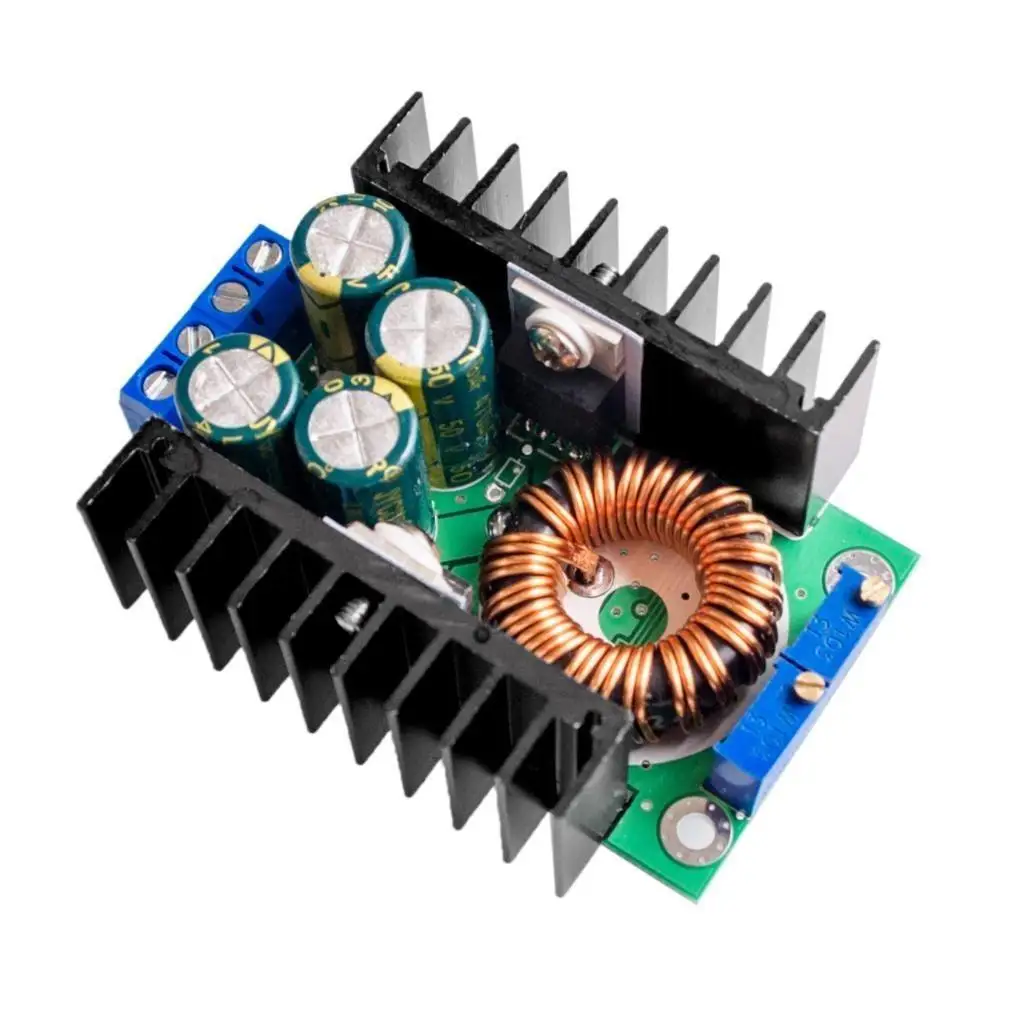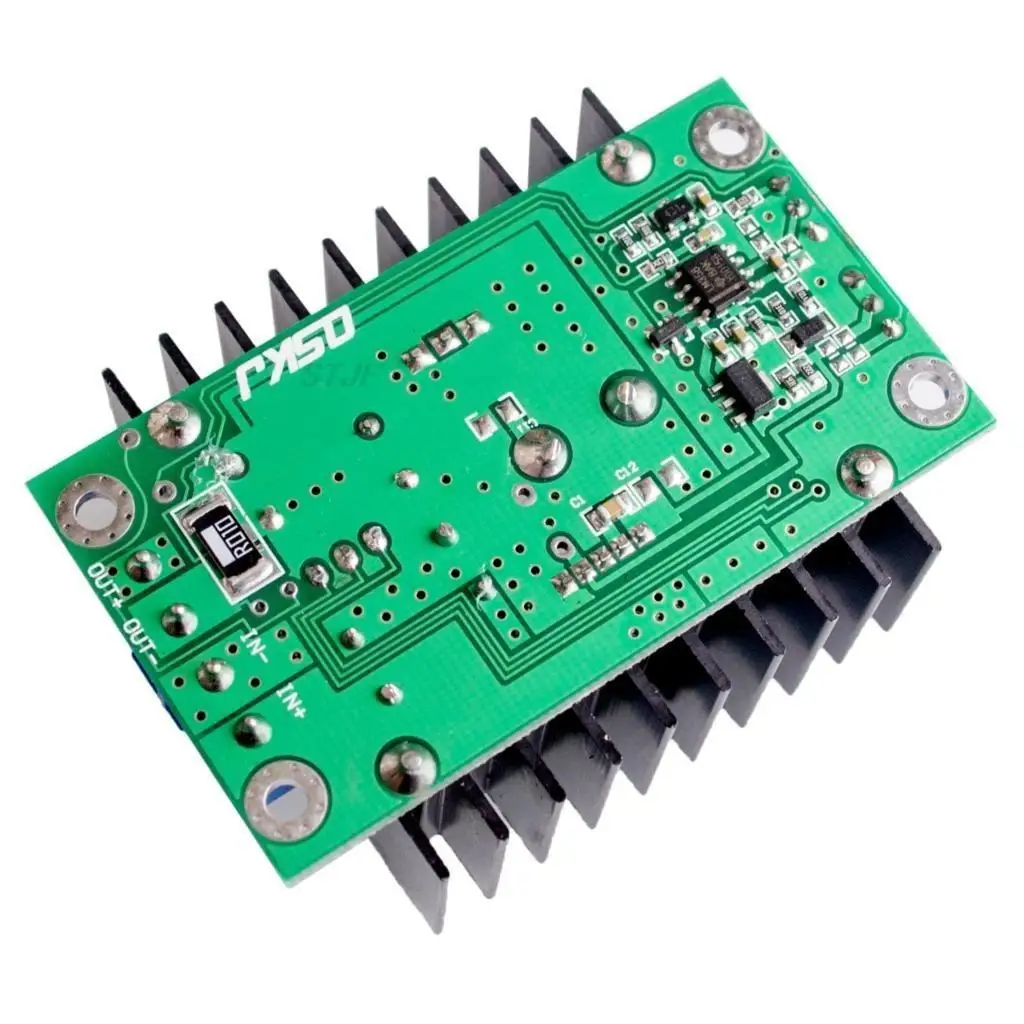Lonten Tech
Custom DC CC 9A 300W Step Down Buck Converter 5-40V To 1.2-35V Power module
Custom DC CC 9A 300W Step Down Buck Converter 5-40V To 1.2-35V Power module
Couldn't load pickup availability
DC CC 9A 300W Step Down Buck Converter 5-40V To 1.2-35V Power module
Typical applications:
Adjustable power supply (12A power is large enough), high-power LED driver, LED display driver, lead battery charging, lithium battery charging, car power supply, car laptop power supply (step-down), regulated power supply, low voltage system power supply, (such as children's toy car with 12V battery step-down to 6V), 24V to 12V 12A \\\\12V to 5V 12A \\\\24V to 5V 12A \\\\24V to 19V20V and so on, the application range is very wide.
1. The fixed turning lamp current is 0.1 times the constant current value (used to identify whether the battery is full when charging);
2. The use of a dedicated reference IC, and high-precision sampling resistance, make the constant current more stable, (20 degrees to 60 degrees constant current 5A temperature drift is less than 5%). Especially suitable for LED drives
3. The output current is large, and the output current can reach 12A to meet most needs.
4.4 high-frequency capacitors, effectively reduce output ripple, improve working stability
5. Double heat sink design, MOS tube Schottky diode independent heat sink, good heat dissipation, do not affect each other
6. Use large size ferrosilicon aluminum magnetic ring at the cost to improve work efficiency, and use pure copper double wire to reduce heat and improve efficiency.
Seven. 3296 multi-turn potentiometer, high voltage and current regulation accuracy, good stability.
8. Special current sampling resistance High current sampling accuracy, good stability, small temperature drift. LED.
9. Two-color indicator light, working status at a glance. Charge up.
10. The voltage and current are adjustable, and the effect of adjustable power supply is good, 12A current is large and the power is sufficient.
Module parameter
Module nature: non-isolated buck constant current, constant voltage module (CC CV) charging module
Scope of application: High power LED constant current drive, lithium battery charging (including ferroelectric),4V, 6V, 12V, 14V, 24V battery charging, nickel-cadmium nickel-metal Hydride battery (battery pack) charging, solar panels, wind turbines
Input voltage: 7-32V(without constant current 5-32V)
Output voltage: (1) Continuously adjustable (0.8-28V)
(2) Fixed output (optional between 0.8-28V), please tell the shopkeeper when buying. (For the time being, only for batch customers, all samples are adjustable)
(3) If you need higher voltage, please contact me directly
Output current: 12A (power tube temperature exceeds 65 degrees, please add fan heat dissipation, 24V to 12V 6A open environment generally can not add fan)
Constant current range: 0.2-12A (adjustable) (no constant current without this function)
Turn lamp current: constant current value * (0.1), turn lamp current and constant current linkage, such as constant current value 3A, turn lamp current set to 0.1 times of constant current (0.1*3A=0.3A), when the constant current value is adjusted to 2A, this time the turn lamp current is 0.1 times of constant current (0.1*2A=0.2A).
The second version is fixed 0.1 times (the actual turn lamp current is approximate value is not very) for charging whether full indication.
Pressure difference: 1V
Output power: About 300W, the power tube temperature exceeds 65 degrees, please add a fan.
Conversion efficiency: about 95% (the higher the output voltage, the higher the efficiency)
Operating frequency: 300KHZ
Output ripple: 20M bandwidth (for reference only)
Input 24V output 12V 5A ripple about 50mV (excluding noise)
Working temperature: Industrial grade (-40℃ to +85℃) (please pay attention to the temperature of the power tube in actual use, and strengthen the heat dissipation if the temperature is too high)
No-load current: Typical 20mA(24V to 12V)
Load adjustment rate: ±1% (constant voltage)
Voltage adjustment rate: ±1%
Constant current accuracy and temperature: In the actual test, the temperature on the module changes from 25 degrees to 60 degrees, and the constant current value changes less than 5% (constant current value 5A)
Dynamic response speed: 5% 200uS
Potentiometer adjustment direction: clockwise (increase), counterclockwise (decrease) The potentiometer near the input is voltage regulation (CV), and the potentiometer near the output is current regulation (CC).
Indicator: two-color indicator, charging indicator red, charging indicator green (not connected to the load is green) without constant current indicator red.
Output short-circuit protection: Yes, constant current (current value set)
Input reverse protection: None,
Output Prevent countercurrent: None.
Connection mode: terminal
Battery charging usage:
1. Determine the floating charging voltage and charging current of the battery you need to charge, and the input voltage of the module;
2. Adjust the constant voltage potentiometer to adjust the output voltage to about 5V.
3. Use a multimeter 10A current stop to measure the output short-circuit current, and adjust the constant current potentiometer to make the output current reach the predetermined charging current value;
4. Adjust the constant voltage potentiometer to make the output voltage reach the floating charge voltage;
5. Connect the battery and charge it.
(Steps 1, 2, 3, and 4 Connect the input to the power supply and the output to the battery.)
LED constant current driver use method:
1. Determine the working current and working voltage that you need to drive the LED;
2. Adjust the constant voltage potentiometer to adjust the output voltage to about 5V.
3. Use a multimeter 10A current stop to measure the output short-circuit current, and adjust the constant current potentiometer to make the output current reach the predetermined LED working current;
4. Adjust the constant voltage potentiometer to make the output voltage reach the LED operating voltage;
5. Connect the LED and test the machine.
(Step 1, 2, 3, 4 for the module input power, output no load LED lights.)


Share










